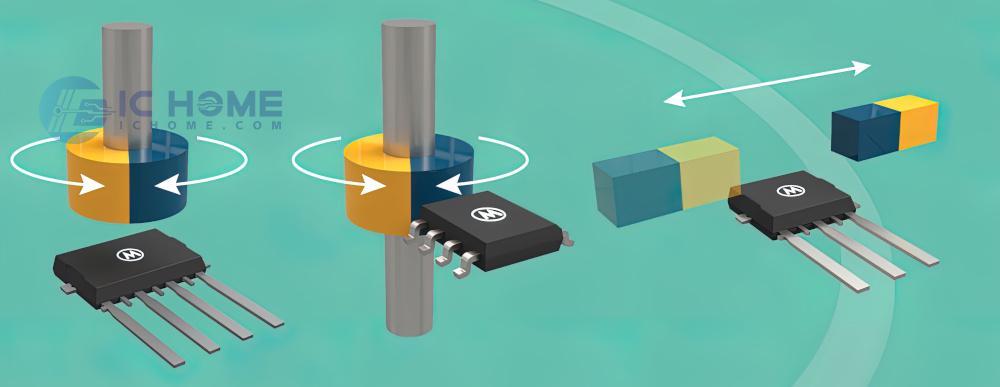Top Hall Sensor Applications for Smart Appliances, Wind Power, and Drones
In the evolving landscape of electronic systems, Hall effect sensors have emerged as a versatile and reliable solution for detecting magnetic fields, measuring current, and providing precise position feedback. While their fundamental principle remains consistent, the application of Hall sensors varies significantly across different industries, depending on environmental conditions, performance requirements, and system constraints. This article explores the differentiated use of Hall sensors in smart appliances, wind power systems, and drones, offering insights for procurement engineers and design teams seeking optimized component solutions.

Smart Appliances: Cost-Efficient Precision for Everyday Use
In the realm of smart home appliances, Hall effect sensors are embedded to provide position, speed, and current sensing in compact and cost-sensitive environments. Applications include:
-
Brushless DC motor control in washing machines, air conditioners, and refrigerators
-
Door position detection in smart ovens and dishwashers
-
Water level sensing in automated washing systems
The key demands in this sector are miniaturization, energy efficiency, and low unit cost. Hall sensors in these applications are typically linear or switch-type, favoring digital outputs for integration with embedded microcontrollers. Since appliances operate under relatively stable conditions (moderate temperature, low EMI), component selection emphasizes long lifecycle and consistent manufacturing quality over extreme environmental robustness.
From a procurement standpoint, standardized Hall ICs with proven reliability from reputable manufacturers offer the best value. It's also critical to ensure compatibility with existing MCUs and signal processing units to reduce system complexity and cost.
Wind Power Systems: Demanding Robustness in Harsh Environments
Hall sensors used in wind turbines and supporting infrastructure face a dramatically different set of challenges. Applications include:
-
Rotor speed and position detection for pitch control and yaw systems
-
Current monitoring in power converters and grid inverters
-
Proximity sensing for mechanical alignment and maintenance systems
Wind energy systems demand components that function reliably under high vibration, temperature fluctuations, humidity, and EMI exposure. Here, isolated Hall effect sensors with high common-mode transient immunity (CMTI) and reinforced insulation ratings are commonly preferred.
Moreover, real-time monitoring systems often require analog Hall sensors with high resolution and low noise for accurate feedback, critical to optimizing turbine performance and longevity.
For procurement teams, sourcing components with IEC and UL certifications, as well as A-grade automotive standards, can ensure compliance and reduce maintenance-related risks. Hall sensors with integrated signal conditioning and overvoltage protection also improve system safety.
Drones: Balancing Performance, Size, and Power Efficiency
The aerospace and drone industries present another distinct landscape where Hall sensors must excel in space-constrained, battery-operated, and performance-critical systems. Their applications include:
-
Rotor position detection in brushless DC motors for flight stability
-
Gimbal stabilization systems for camera orientation
-
Battery management systems for current and voltage monitoring
In drones, weight, power efficiency, and electromagnetic interference are primary concerns. Hall sensors must be ultra-low power, often operating in standby modes and waking only during specific flight tasks. 3D Hall sensors and multi-axis configurations are increasingly popular for drone stabilization, offering compact solutions that integrate multiple functions into a single package.
Innovations such as TMR (Tunnel Magnetoresistance) and AMR (Anisotropic Magnetoresistance) sensor technologies are also being explored as alternatives or complements to traditional Hall sensors in high-performance drone systems, though cost remains a barrier for mass-market UAVs.
Conclusion: One Technology, Many Contexts
While Hall effect sensors share a unified principle—detecting magnetic fields to generate measurable signals—their deployment varies sharply depending on the industry. For procurement specialists and engineers, understanding these nuanced demands is essential to choosing the right sensor with the optimal trade-off between cost, reliability, precision, and environmental resilience.
At ICHOME, we help engineers and sourcing teams navigate these choices with a curated selection of Hall sensors from trusted global brands, offering full technical documentation, cross-part alternatives, and expert consultation. Whether you're designing for smart appliances, renewable energy systems, or next-gen UAVs, making the right sensor choice starts with a deep understanding of your application's context.




